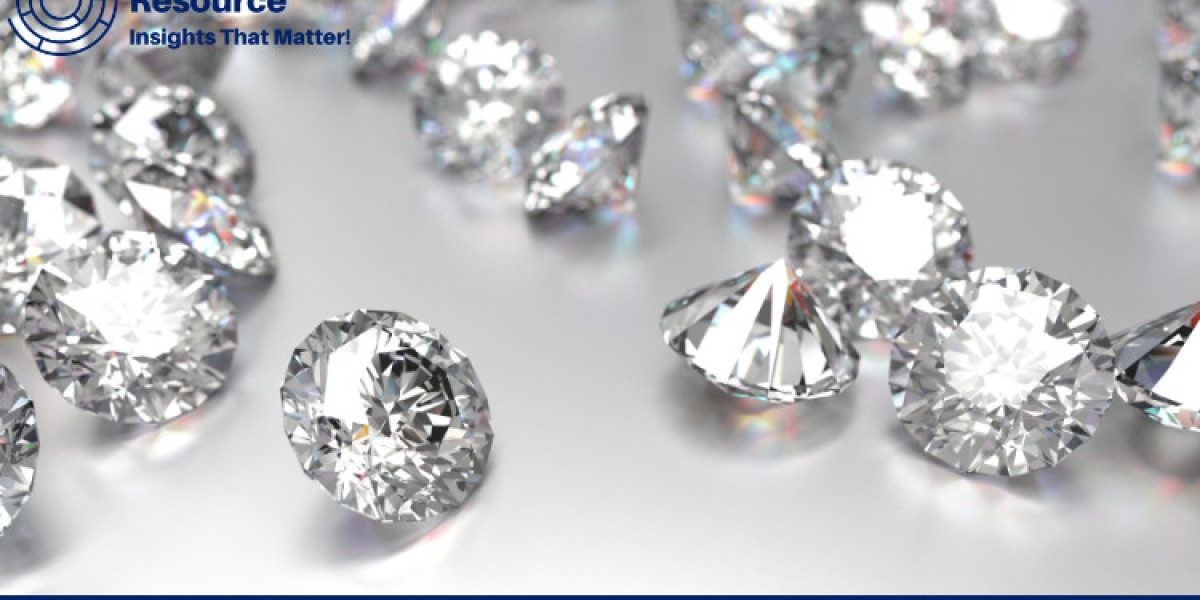Diamonds have long been valued for their beauty, rarity, and status as a luxury asset, making them a crucial component in both the jewelry industry and investment portfolios. The Diamond Price Trend is influenced by a variety of factors, including global demand, supply chain dynamics, economic conditions, and shifting consumer preferences. In this press release, we explore the diamond market in detail, covering the price trend, analysis, charting, industry news, an index overview, and graphical insights to provide a comprehensive understanding of the factors influencing diamond pricing.
Request a Free Sample – https://www.procurementresource.com/resource-center/diamond-price-trends/pricerequest
Understanding the Diamond Price Trend
The Diamond Price Trend reflects the complex interplay of demand, mining production, economic conditions, and market dynamics. While diamonds are generally considered stable in value, their prices fluctuate in response to market conditions and external influences.
Key factors impacting the diamond price trend include:
Global Demand and Consumer Preferences: Demand from consumers in major markets, particularly the U.S., China, and India, heavily influences diamond prices. Shifts in consumer preferences, such as the growing popularity of lab-grown diamonds, can also impact natural diamond demand and pricing.
Supply Chain and Mining Output: Diamond prices are highly dependent on mining output from major diamond-producing countries, including Russia, Botswana, and Canada. Any decrease in mining production, due to geological or regulatory challenges, can tighten supply and drive up prices.
Economic Conditions and Market Sentiment: As a luxury item, diamonds are sensitive to economic conditions. During periods of economic growth, demand and prices tend to rise. However, economic downturns or crises can dampen consumer spending on luxury goods, impacting diamond prices.
Lab-Grown Diamonds and Market Diversification: The rise of lab-grown diamonds, which offer similar quality at a fraction of the cost, has added competitive pressure to the natural diamond market. This shift has introduced new price dynamics, as lab-grown diamonds present a more affordable alternative for budget-conscious consumers.
Seasonal and Cultural Demand Patterns: Diamond sales often peak during holiday seasons and traditional wedding periods in key markets. This seasonal demand can lead to temporary price increases, particularly for popular diamond cuts and sizes.
Diamond Price Analysis
A Diamond Price Analysis examines the underlying factors that influence diamond prices, including production costs, distribution expenses, grading standards, and market demand. This analysis provides industry professionals, investors, and consumers with insights into the cost dynamics of diamonds.
Mining and Production Costs: Diamond mining involves significant costs, including labor, equipment, and environmental measures. These costs vary depending on the mine's location, operating conditions, and the quality of the diamonds extracted. As production costs increase, diamond prices are likely to follow suit to maintain profitability.
Distribution and Retail Markups: The diamond supply chain, from mining to retail, involves multiple stages, each adding to the final price. Retail markups and distribution expenses can significantly impact diamond pricing, especially in markets where consumers expect high-quality, branded products.
Grading and Quality: Diamond prices are heavily influenced by the “4 Cs” – carat, cut, color, and clarity. Higher-quality diamonds command premium prices, and the market places high value on certain diamond characteristics. For example, flawless, colorless diamonds tend to retain higher prices.
Currency Exchange Rates: As diamonds are traded globally, currency fluctuations can impact prices. A weaker U.S. dollar, for example, makes diamonds more affordable for international buyers, potentially boosting demand and prices.
Influence of Lab-Grown Diamonds: Lab-grown diamonds, priced significantly lower than natural diamonds, are beginning to shift consumer behavior and affect natural diamond prices. The market response to lab-grown diamonds could impact natural diamond prices in the future, especially as lab-grown diamonds gain popularity.
Diamond Price Chart
A Diamond Price Chart provides a visual representation of price trends over time, illustrating how diamond prices respond to market conditions and seasonal demand. Price charts are valuable for analyzing both short- and long-term market movements, helping stakeholders understand the impact of economic changes and consumer trends.
Recent diamond price charts have shown:
Seasonal Price Increases: Diamond prices often rise in November and December due to holiday and engagement season demand, as well as during peak wedding months in India and China. This pattern is particularly evident in the price charts of popular diamond sizes and cuts.
Effects of Market Disruptions: Price charts reveal how significant events, like the COVID-19 pandemic, impacted diamond prices. During the early months of the pandemic, diamond demand dropped due to retail closures, followed by a price recovery as markets reopened and demand rebounded.
Comparative Analysis with Lab-Grown Diamonds: Comparing natural diamond prices with lab-grown diamond prices can help businesses understand consumer shifts and potential impacts on natural diamond pricing. Many price charts now include lab-grown diamond pricing to provide a broader market perspective.
Diamond Price News
Staying updated with Diamond Price News is essential for understanding real-time market changes that can impact diamond prices. News updates offer insights into factors like mining production, consumer demand trends, economic developments, and technological advancements that directly influence the diamond market.
Key sources of diamond price news include:
Mining and Production Updates: News on mining activities, new discoveries, and production quotas provides stakeholders with important information on supply levels. For instance, a new diamond discovery or the expansion of mining operations can increase supply, potentially lowering prices.
Retail and Consumer Trends: Reports on consumer trends, especially in key markets like the U.S., China, and India, help track shifts in diamond demand. Emerging trends, such as the popularity of non-traditional gemstones or lab-grown diamonds, impact demand for natural diamonds.
Economic and Geopolitical Events: Economic conditions, interest rates, and geopolitical events, such as sanctions on diamond-producing countries, can affect the global supply and pricing of diamonds. For instance, sanctions on Russian diamonds have had recent impacts on global diamond pricing.
Technological Advances in Lab-Grown Diamonds: News on lab-grown diamond technology and production capabilities can provide insights into the competitive landscape. As lab-grown diamond production becomes more efficient, their affordability and availability could shift consumer behavior and influence natural diamond prices.
Diamond Price Index
The Diamond Price Index serves as an aggregated measure of price changes in the diamond market, helping stakeholders track overall price stability or volatility. The index is a valuable tool for identifying long-term trends and making data-driven decisions based on consistent pricing information.
The diamond price index reflects:
Market Volatility: The index highlights periods of high price volatility, often corresponding to significant events or shifts in market sentiment. For instance, the diamond price index showed marked volatility during the COVID-19 pandemic due to sudden drops in demand followed by recovery.
Trends Across Diamond Categories: The index tracks price trends across different diamond categories, from popular carat sizes and shapes to different grades of clarity and color. This granular view helps retailers and consumers understand how prices for specific types of diamonds have changed over time.
Macroeconomic Influence: By comparing the diamond price index with broader economic indicators like inflation and consumer confidence, stakeholders gain insights into how economic conditions impact diamond demand and pricing.
Diamond Price Graph
A Diamond Price Graph provides a detailed and dynamic view of price trends, allowing stakeholders to identify key patterns, peaks, and troughs in the diamond market. Unlike a static chart, a price graph provides a visual summary of price changes over time, helping stakeholders analyze and interpret market shifts.
Key insights from a diamond price graph include:
Historical Pricing Trends: A diamond price graph often spans several years, providing a historical perspective on diamond price fluctuations. This view helps stakeholders understand how past events, such as recessions or market disruptions, impacted diamond pricing.
Event-Based Analysis: Many price graphs highlight specific events, such as geopolitical tensions, technological advances, or changes in consumer demand. These event markers help stakeholders connect specific occurrences with price fluctuations, making it easier to interpret market dynamics.
Comparison with Lab-Grown Diamonds: Including lab-grown diamond prices in a diamond price graph allows for a comparative analysis of natural and lab-grown diamond markets. This comparison is essential for understanding how lab-grown diamond popularity may influence natural diamond pricing in the future.
Contact Us
Company Name: Procurement Resource
Contact Person: Amanda Williams
Email: sales@procurementresource.com
Toll-Free Numbers:
USA copyright: 1 307 363 1045
UK: 44 7537171117
Asia-Pacific (APAC): 91 1203185500
Address: 30 North Gould Street, Sheridan, WY 82801, USA








